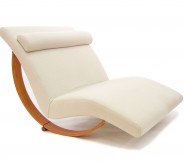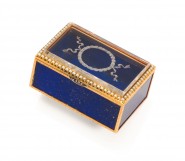Lot #14 - Henri Martin
-
Auction House:Mossgreen
-
Sale Name:Fine Australian & International Art
-
Sale Date:02 May 2016 ~ 6.30pm - Part 1 - Lots 1 - 47
03 May 2016 ~ 2.30pm - Part 2 - Lots 48 - 320 -
Lot #:14
-
Lot Description:Henri Martin
(French, 1860-1943)
(Devant de Porte, en Eté) c. 1910
oil on canvas
56 x 95 cm
signed lower right: Henri Martin -
Provenance:Private collection, Melbourne
-
Notes:In the closing decades of the nineteenth century, Henri Martin progressively became one of the most desirable and distinguished of all Parisian artists. Shortly after having exchanged his native Toulouse and the provincial classes of Jules Garipuy for the more prestigious and academic atelier of Jean-Paul Laurens in the French capital, Martin was showered with Salon medals and State honours. These acts of public recognition and achievement culminated with the Grand Prix in the Exposition Universelle of 1900, and then being made an Officer (later Commander) of the Légion d'honneur for his contributions to the arts. Furthermore, Martin was esteemed by his contemporary colleagues and general public in equal measure. Pierre Puvis de Chavannes, the major French symbolist and public muralist of the nineteenth century, was proud to declare Martin his stylistic heir1; while Apollinaire labelled him the 'great painter of primary education' after having seen Martin's murals in le Capitole de Toulouse. 2 Martin held the enviably privileged position of being accepted by academic circles whilst adopting the most avant-garde technical principles of his time, primarily, Pointillisme. This ability to straddle between two supposedly irreconcilable positions irritated some of his more progressive contemporaries. Signac made his disapproval of Martin's ambivalence (and success) clear when he published his views in his book, D'Eugne Delacroix au neo-impressionism. Signac lamented that Martin's version of pointillism 'has [unjustly] found favour with the public, critics, municipal committees and the State É [his work] has entered the Luxembourg and the H™tel de Ville, while the great Seurat, founder of so many grand, and serene works, is still little known.'3 Certainly, Martin was not as radical in approach, systematic or consistent in execution, and scientific in method as Signac and Seurat. He acknowledged so much in a letter to a friend: 'I know full well that my technique irritates many people. But what does the method matter! I do not pretend to have discovered a decisive, a definitive one; each day I keep searching in every direction looking for something better.'4 The Toulousain embraced post-impressionist dabs and daubs as a means to an end. It was perhaps this laissez-faire attitude and lack of allegiance to any specific art gang which saw the slow and sad neglect of Henri Martin's work in the first half of the twentieth century. From 1900, Martin gradually withdrew from the Paris art world and would spend most of his time nestled in the southern sleepy village of Labastide-du-Vert, in the Lot. Labastide became for Martin what Giverny was to Monet. Not only did this trigger the obvious shift in subject matter, but it allowed Martin, as it had with Monet, to begin a period of concentrated investigations into the effects of light and seasons of his immediate surrounds. In essence, Martin gradually moved away from the Symbolist aesthetic which had brought him fame and large commissions, and became absorbed in the quiet, personal, movement which we now call Intimisme. Devant de Porte, en Eté belongs to this later period when Martin began to explore and document the rustic surrounds of his immediate neighbourhood of Labastide. He found all he could ever want to paint within a kilometre of his front doorstep - a key characteristic of les Intimistes. The local church, the main bridge, the surrounding hills, and his backyard and terrace would take centre stage, as it were, in his art. The subject in the present work is probably the doorway to a neighbour's house as the street side curb in the foreground suggests.5 The simple doorway, framed by oleanders and crowned by an overgrown flowering vine, is captured in a brilliance of shimmering light and shade. The paint is applied with varying techniques throughout the canvas: small mosaic-like spots for the sunlit foreground, to longer, blurred and dragged-out brushstrokes of brilliant forest when representing the foliage. The whole, nonetheless, is united in a coherent Divisionist construct of juxtaposed marks, giving the composition it's midsummer's vibrancy. Martin's canvases come onto the Australian market very rarely. Devant de Porte, en Eté is an exquisite example of the artist's ability, and delight, in capturing the little monuments surrounding his new environment. It is not surprising then that works from this period in Martin's life are among the most desirable. Petrit Abazi 1 Léonce Bénédite, Catalogue of Oil Paintings and Studies by Henri Martin, William Machant & Co. and The Goupil Gallery, London, 1913, p.4. 2 Guillaume Apollinaire, 'Le Salon des Artistes Franaise', Paris-Journal (1 May 1914), in Guillaume Apollinaire, Apollinaire on Art: Essays and Reviews, 1902-1918, ed. LeRoy Breunig, London, 1972, p.368. 3 Paul Signac, D'Eugne Delacroix au neo-impressionism, Paris, 1899, 110. 4 Henri Martin, letter to his friend and art critic Bernard Marcel, in Henri Martin: Collection Paul Riff, Rennes Encheres, Paris, April 2012, p.6. 5 Comparative analysis with other paintings of Martin's front door demonstrates that the present work is not of his villa, Marquayrol.
-
Estimate:A$100,000 - 150,000
-
Realised Price:
-
Category:Art
This Sale has been held and this item is no longer available. Details are provided for information purposes only.










